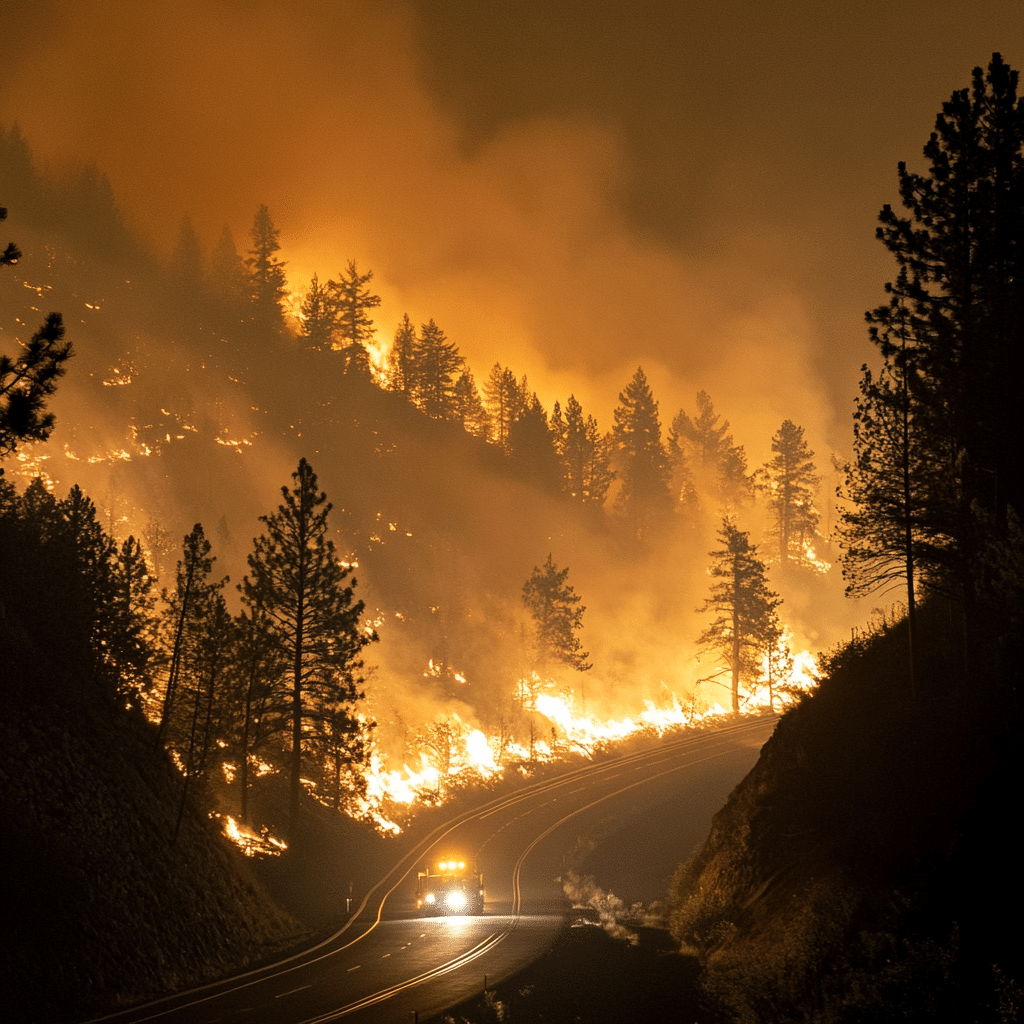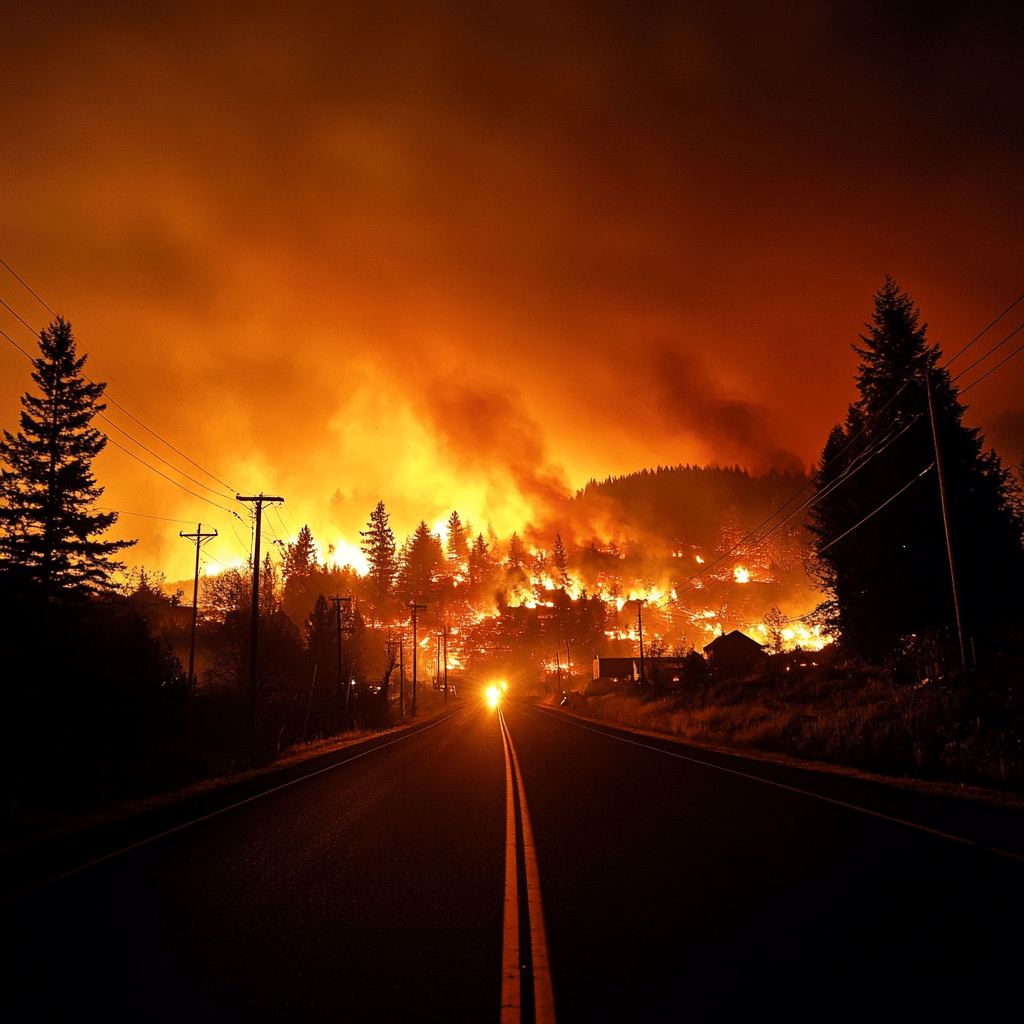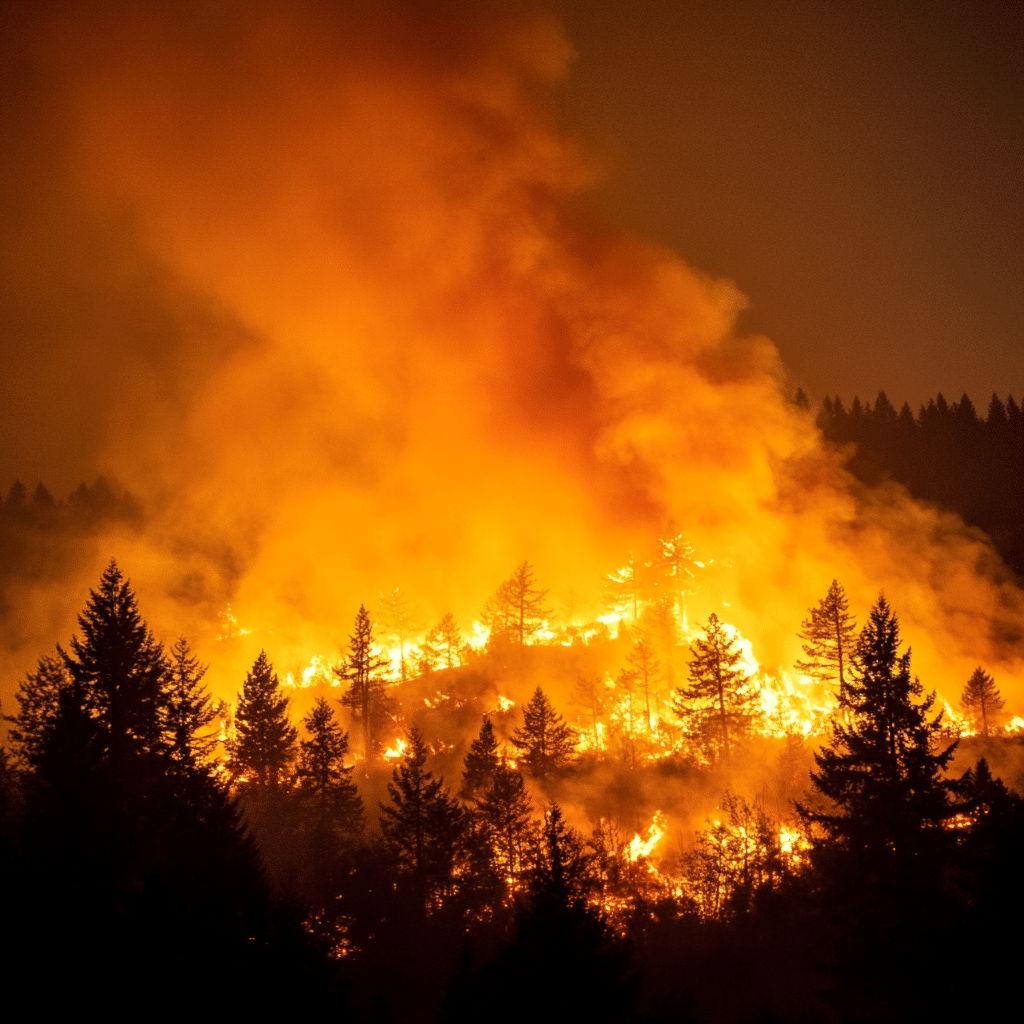The Oregon wildfires of 2023 have emerged as one of the most catastrophic environmental events in the state’s history. Lives were disrupted, and the natural landscape was charred, forcing communities into a long and often painful recovery process. As Oregon grapples with these unprecedented challenges, effective environmental management and community resilience remain at the forefront of discussions. In the face of destruction, the path to recovery is complex, requiring a multifaceted approach that addresses immediate needs and anticipates future fire risks.
Top 5 Challenges Faced in Oregon Wildfire Recovery
1. Displacement of Residents
The devastating Oregon wildfires have left many families displaced and living in temporary housing or shelters. Organizations like the Oregon Office of Emergency Management report thousands of residents have been forced to evacuate, with many still searching for permanent housing solutions by early 2024. This uprooting doesn’t just impact day-to-day living; it can lead to long-lasting psychological effects, such as anxiety and depression. The sense of belonging that many residents feel is shattered, making the need for emotional support and community rebuilding critical.
2. Resource Allocation for Rebuilding
Rebuilding efforts in the wake of the Oregon wildfires face considerable hurdles. Local governments continue to struggle with resource allocation, citing insufficient funding and manpower. Tiny rural communities often find themselves without adequate infrastructure to support rapid recovery, leading to extended periods of hardship. Although the Federal Emergency Management Agency (FEMA) has pledged additional disaster relief funding, many survivors find the application process confusing. There’s a real desire to move forward, but without streamlined access to resources, that’s easier said than done.
3. Environmental Impact and Education
The ecological ramifications of the Oregon wildfires have been staggering. Oregon’s delicate ecosystems are left with lasting scars that concern environmentalists and residents alike. Air quality has deteriorated, with smoke pollution affecting not just wildlife habitats but also human health. To combat these effects, the Oregon Department of Forestry has launched educational programs aimed at teaching residents fire-resistant landscaping practices and sustainable living techniques. spurred by the widespread destruction, community initiatives to restore natural habitats are emerging, showcasing grassroot efforts that aim to heal both the land and spirit.
4. The Role of Technology and Mapping
When it comes to fire management, technology plays a crucial role in response efforts. The Oregon fire map, developed with input from state agencies and tech companies, is instrumental in analyzing fire spread patterns and predicting potential threats. During the chaotic 2023 fire season, this interactive tool allowed individuals to track active fires, evacuation zones, and government resources in real-time. Continuous updates from ground crews and aerial reconnaissance strengthen its effectiveness, ensuring that both emergency responders and residents stay informed about ongoing dangers.
5. Comparative Analysis with Other States
As Oregon wrestles with recovery, looking at how other states handle wildfire challenges reveals valuable insights. For instance, California wildfires have prompted state authorities to develop community-based fire prevention strategies, serving as a model for Oregon’s policymakers. In contrast, the struggles seen in Texas wildfires highlight the vulnerability faced by rural areas that often get overlooked in broader recovery plans. By studying these comparisons, Oregon can implement effective strategies while avoiding past pitfalls faced by states like Colorado and California.

Oregon Wildfire Map: Implementation and Benefits
The implementation of the Oregon wildfire map has revolutionized how residents and emergency personnel interact with fire data. This dynamic tool enables users to grasp the current situation, including active fires and evacuation areas, which is critical for safety measures during emergencies. In the 2023 fire season, its timely updates significantly informed residents of dangers and influenced evacuation orders.
State officials are dedicated to keeping this map up-to-date, integrating live data to bolster its reliability. As the Western United States reckons with the threat of wildfires, Oregon’s proactive stance in utilizing technological advancements sets a powerful example for neighboring states.
Community Resilience: Local Stories of Recovery
Grassroots stories of resilience are invaluable in understanding the long road to recovery following the Oregon wildfires. Residents in Ashland have banded together, forming grassroots recovery groups that provide shared resources like tool libraries and community gardens. This cooperation is about more than rebuilding physical structures; it fosters a renewed sense of community spirit amid adversity.
Local businesses have also stepped up, taking part in community recovery efforts. One notable restaurant in Talent, OR, hosted “Dine to Rebuild” nights, where a portion of the proceeds supported wildfire recovery initiatives. It’s heartwarming to see citizens rallying around those in need, proving that even in the face of disaster, the human spirit shines brightly.

Looking Ahead: The Future of Wildfire Management in Oregon
As Oregon looks to the future, wildfire preparedness remains at the forefront of conversation. There’s a growing focus on policy innovation aimed at reducing damage from future incidents. Some upcoming legislative proposals include establishing stricter building codes in fire-prone areas and expanding protocols for controlled burns, similar to strategies adopted in Colorado.
The infusion of federal and state funding is also paving the way for advanced research on using drones and artificial intelligence to detect wildfires early. Amid these flames of adversity, Oregon has a chance to shape wildfire management not just within its borders but as a national model.
With lessons from the devastation of past wildfires, Oregon finds itself at a crossroads. Healing the scars left on communities while strengthening defenses against future threats demands a blend of community effort, technological innovation, and legislative support. The experience gained from this disaster could very well forge a fire-resilient future, not just for Oregon, but for regions across the nation grappling with similar wildfires.
The Oregon wildfires have undoubtedly marked a turning point for the state. As the smoke clears, the journey of recovery reveals not only the challenges ahead but also the unyielding spirit of those who call Oregon home.
Oregon Wildfires: Trivia and Interesting Facts
The Nature of Oregon Wildfires
The Oregon wildfires are not just devastating to homes and forests, they also bring some surprising trivia to light. Did you know that the Pacific Northwest has one of the most diverse ecosystems in the U.S.? This region houses over 100 species of trees, many of which are at risk due to the increasing intensity of wildfires. As these fires rage, they not only consume wildlife habitats but also draw attention to fascinating sites like the notorious Whaley House, known as one of the most haunted locations in America. While people often associate wildfires with destruction, they can also contribute to forest rejuvenation, allowing certain species to thrive post-fire.
The Impact on Communities
Communities affected by the Oregon wildfires face significant recovery challenges. It’s heartbreaking, but sometimes, local events like a quaint splash pad can turn tragic, as seen in the recent splash pad shooting in Michigan. Yet, amidst the chaos and recovery, there’s often hope. People come together, much like a team rallying after a tough game, and neighborhoods get busy planting trees and shrubs to restore their green spaces. Just like a Boise State running back dodges defenders, residents work hard to navigate the recovery process, proving resilience can be found even in the darkest times.
Fun Facts and Reflections
Interestingly, some people are finding quirky humor in tough situations, reminiscent of the iconic waiting meme that resonates with anyone who’s ever faced long lines or delays. There’s something about the human spirit that finds light even in tough days. For instance, protective guard Dogs are becoming increasingly popular among homeowners as a way to keep properties safe from potential threats during wildfire season. While some folks settle for laughter, others appreciate deeper revelations, exploring concepts like the meaning of ‘milf’—not exactly related to wildfires but certainly an engaging topic in social circles. Ultimately, whether contemplating wildfires or pondering the eerie tales of the area’s historic sites, there’s always something new to learn and reflect upon in Oregon.




